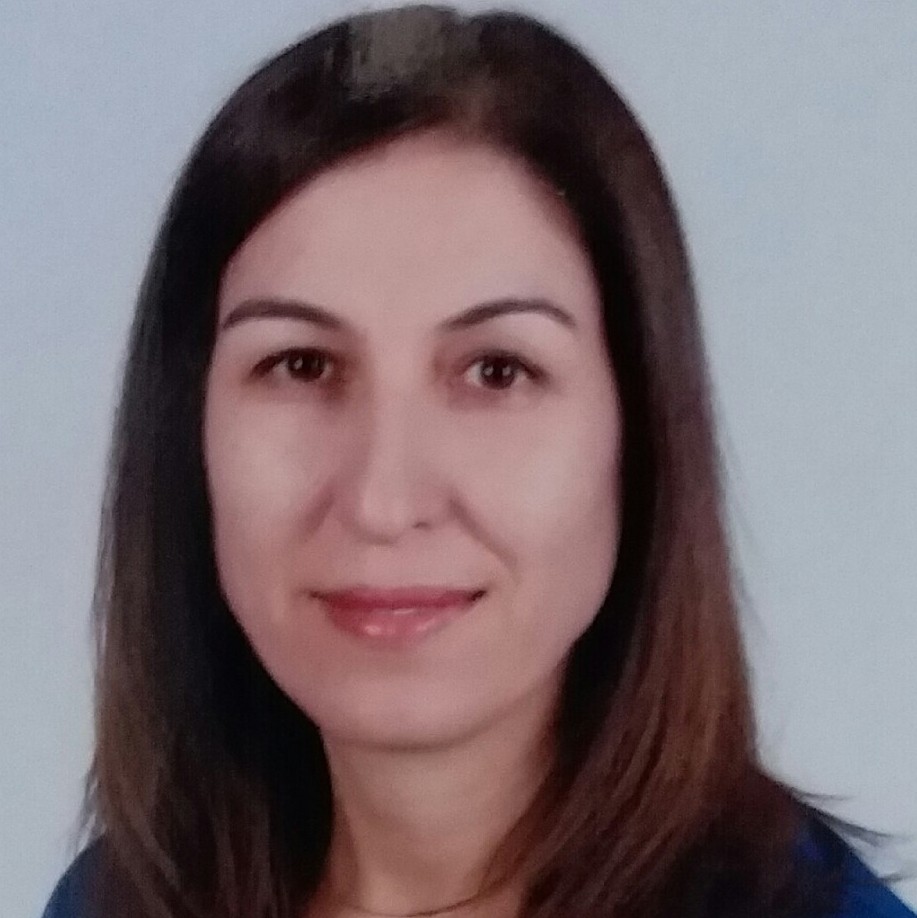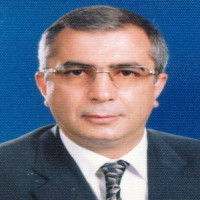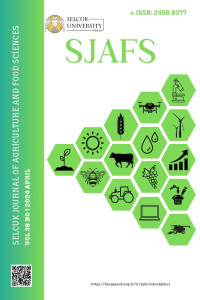Research Article
Review Articles
Issue Reviewers











 Web
Web
Furkan Çoban has specialized in agricultural science and plant cultivation as a plant scientist for over 15 years. Combining his academic and industrial experience, he has worked on plant breeding, improving quality and yield in industrial crops, discovering bioactive compounds, and sustainable agricultural practices. After completing his education in agricultural engineering at Selçuk University, he pursued a Ph.D. at Atatürk University, focusing on the effects of nitrogen applications and planting techniques on the quality and bioactive compound profiles of industrial crops. He has also served as a researcher at the Swedish University of Agricultural Sciences, concentrating on innovative green biostructures, converting plant biomass into value-added products, and modern plant breeding programs.







 Web
Web









In 2014, I commenced my role as a research assistant with ÖYP (Faculty Member Training Program) at Selçuk University's Faculty of Agriculture, Department of Field Crops and Department of Medicinal Plants. In 2021, I completed my doctoral specialisation in the Department of Medicinal Plants. I am currently employed as a Assist. Dr. at my current institution. My research activities encompass the development and production of medicinal plants, the maintenance of consistent yields, the standardisation of processes, the transformation of herbal products, the quality assessment of the resulting materials, and the evaluation of the outcomes.

Selçuk Üniversitesi Ziraat Fakültesi Bahçe Bitkileri Bölümde 2010 yılından itibaren görev yapmaktayım. Meyve Yetiştiriciliği Anabilimdalında stres fizyolojisi ve doku kültürleri hakkında çalışmalarda bulunmaktayım.
Aim & Scope
It is an accessible online journal. Selcuk Journal of Agriculture and Food Sciences aims to publish scientific research results from national and international priority areas that can be referenced in the future. Selcuk Journal of Agriculture and Food Sciences aims to publish articles in the fields of Horticulture, Plant Protection, Food Science and Technology, Agricultural Economics, Field Crops, Agricultural Structures and Irrigation, Agricultural Machinery, Soil Science and Plant Nutrition and Animal Husbandry. It is an independent, double-blind peer-reviewed, open access journal.
The journal aims to contribute to science by publishing high-quality publications of scientific importance. To this end, original research articles, reviews, case reports, and letters to the editor are published in all areas related to basic or extended clinical experience in health sciences.
Official abbreviation: Selcuk J Agr Food Sci
E-ISSN: 2458-8377
Full-Text Publication Language:
• Language: English
Content Written in English and Latin Alphabet:
• Article Title: English
• Author's Name: Turkish (in Latin Alphabet)
• Author's Address: English (Latin Alphabet)
• Keywords: English
• References: English (in Latin Alphabet)
Full Text: English (in Latin Alphabet)
Article Submissions
Submitted articles must be in accordance with the aim and scope of the journal. Manuscripts that are original, unpublished, and not in the process of evaluation in another journal, whose content and submission have been approved by each author, are accepted for evaluation.
Readership
Author Guidelines
Manuscript preparation
Language: English
Manuscript types: Original research and reviews
However, we advise the authors to be as concise as possible for the dissemination of the work.
Manuscript format
Writing rules
Image Format
Keywords: The author should provide a maximum of 6 keywords in alphabetical order separated with semicolons, not included in the title. The scientific or systematic names of plants and fungi should be italicized. eg. Triticum aestivum; in vitro; in vivo.
Results and Discussions: In this section, the data and information should be presented using tables or figures. The Editorial Board has the right to decline the manuscript in the event no proper statistical analysis selection or incorrect statistical procedures are used. The findings should be discussed but the author/s should be aware of unnecessary repetitions. Findings should be compared with other previous study literature and reasons for similarities or differences should be defined.
Author Contributions: For research articles with several authors, a short paragraph specifying their individual contributions must be provided. The following statements should be used “Conceptualization, X.X. and Y.Y.; methodology, X.X.; software, X.X.; validation, X.X., Y.Y. and Z.Z.; formal analysis, X.X.; investigation, X.X.; resources, X.X.; data curation, X.X.; writing—original draft preparation, X.X.; writing—review and editing, X.X.; visualization, X.X.; supervision, X.X.; project administration, X.X.; funding acquisition, Y.Y. All authors have read and agreed to the published version of the manuscript.” Please turn to the CRediT taxonomy for the term explanation. Authorship must be limited to those who have contributed substantially to the work reported.
Funding: Please add: “This research received no external funding "or " This research was funded by NAME OF FUNDER, grant number XXX” and “The APC was funded by XXX”. Check carefully that the details given are accurate and use the standard spelling of funding agency names at https://search.crossref.org/funding. Any errors may affect your future funding.
Data Availability Statement: In this section, please provide details regarding where data supporting reported results can be found, including links to publicly archived datasets analyzed or generated during the study. Please refer to the suggested Data Availability Statements in the section “SJAFS Research Data Policies” at https://dergipark.org.tr/en/pub/selcukjafsci/policy. You might choose to exclude this statement if the study did not report any data.
Acknowledgments: In this section, you can acknowledge any support given which is not covered by the author contribution or funding sections. This may include administrative and technical support, or donations in kind (e.g., materials used for experiments).
Conflicts of Interest: Declare conflicts of interest or state “The authors declare no conflict of interest.” Authors must identify and declare any personal circumstances or interests that may be perceived as inappropriately influencing the representation or interpretation of reported research results. Any role of the funders in the design of the study; in the collection, analysis, or interpretation of data; in the writing of the manuscript, or in the decision to publish the results must be declared in this section. If there is no role, please state “The funders had no role in the design of the study; in the collection, analyses, or interpretation of data; in the writing of the manuscript, or in the decision to publish the results”.
Tables and Figures: All illustrations such as photographs, drawings, graphs, etc. must be labeled “Figure.” The number in order of mention in the text and table should be in text form not shown as an image. It should be presented in table form. Tables and figures, including the caption, title, column heads, and footnotes, must not exceed 16 × 20 cm and should be no smaller than 8 cm in width. Author/s must not duplicate information that is already presented in the figures. Figures and tables should be a good resolution to get high-quality press. Photos contributing study results must have 600 dpi resolutions in 'jpg' format. Author/s must prefer the grey or black font instead of the color. No vertical lines are allowed to use in tables and those tables must be prepared in accordance with the 'Paper Template'. All tables and figures must be cited in the text. They must be numbered consecutively as they are referred to in the text. (Table 1 and Figure 1). Captions of tables and figures must have clear and concise descriptions. Captions of tables and figures, words through the tables or figures, and dip not of the tables or figures must be font sizes of 10, 9, and 8 Times New Roman, respectively. Horizontal and vertical lines must not be included in the figures. However, small letters can be used if statistical comparisons are made. If tables and figures have abbreviations, they should be described just bottom of the tables and figures.
Units: SI (System International Units) must be used. For decimal use, full stop or point must be used instead of commas (e.g., 1.25 instead of 1,25). In units, '/ ' must not be used and there must be one free space between units (e.g., m s-1 must be used instead of m/s; J s-1 must be used instead of J/s; kg m s−2 must be used instead of kg m/s2). There must be one free space between the number and symbol (e.g., 4 kg N ha-1, 3 kg m−1 s−2, 20 N m, 1000 s−1, 100 kPa, 22 °C). There is a special case for degree, minute, and second (°, ′ and ″) symbols. Those symbols must be used just after the number (e.g., 10°, 45', 60"). The abbreviation of liter must be as 'L'. If the symbols are not at the end of the sentence, the full stop must not be used after the symbol.
Journal articles:
Books:
Kempthorne O (1957). An Introduction to Genetic Statistics. Wiley and Sons, New York, USA. p.104.
Chapters in books
Eteve G (1985). Breeding for tolerance and winter hardiness in pea. In Hebblethwaite PD, Heath MC, Dawkins TCK (Eds), The pea Crop: A Basis for Improvement. Butterworths, London. UK, pp. 131-136.
Anonymous (Unknown Author/s):
TUİK (2012). Agricultural Statistics Summary. Turkish Statistical Institute, Publication No: 3877, Ankara. p.333.
From Internet:
FAO (2013). Production and trade statistics. http://www.fao.org/economic/ess/ess-trade/en/ (access date: 02.10.2013).
Thesis:
Ceyhan E (2003). Determination of some agricultural characters and their heredity through line x tester method in pea parents and crosses. PhD Thesis, Selcuk University (Unpublished), Turkey
Conference Proceedings:
Final Checklist
It is hoped that this list will be useful during the final check of the prepared article before it is uploaded to the journal system.
Submission Preparation Checklist
As part of the submission process, authors are required to check off their submission's compliance with all of the following items, and submissions may be returned to authors that do not adhere to these guidelines.
Ethical Principles and Publication Policy
The Selcuk Journal of Agriculture and Food Sciences is a journal that is committed to science and publishing ethics.
Publication Ethics Principles
Publication Ethics can be defined as a self-regulation mechanism that insists on honesty on behalf of authors, reviewers and publishers to establish higher standards of editorial handling. Ethical standards for publication exist to ensure high-quality scientific publications, public confidence in scientific findings, and people's opinions being respected.
Price Policy
Selcuk Journal of Agriculture and Food Sciences is an open-access journal, no fee is charged for the journal. No fee is paid to the author for the published texts.
All financial and legal copyright transactions of translations are carried out by the translator. No financial support is provided to the translator for copyright fees and any other fees. The author is deemed to have accepted all financial, legal, and scientific responsibility from the date of submission of the translation to the Selcuk Journal of Agriculture and Food Sciences.
Selcuk Agricultural and Food Sciences is licensed under a Creative Commons Attribution-NonCommercial 4.0 International License (CC BY NC).

